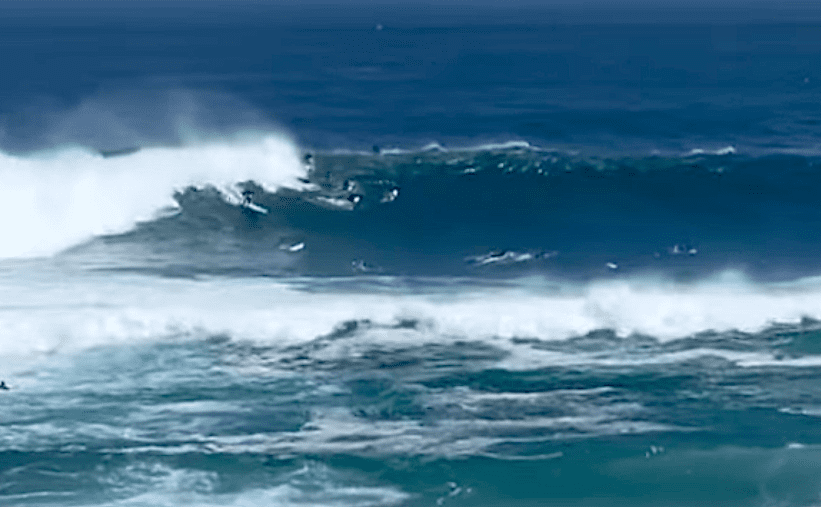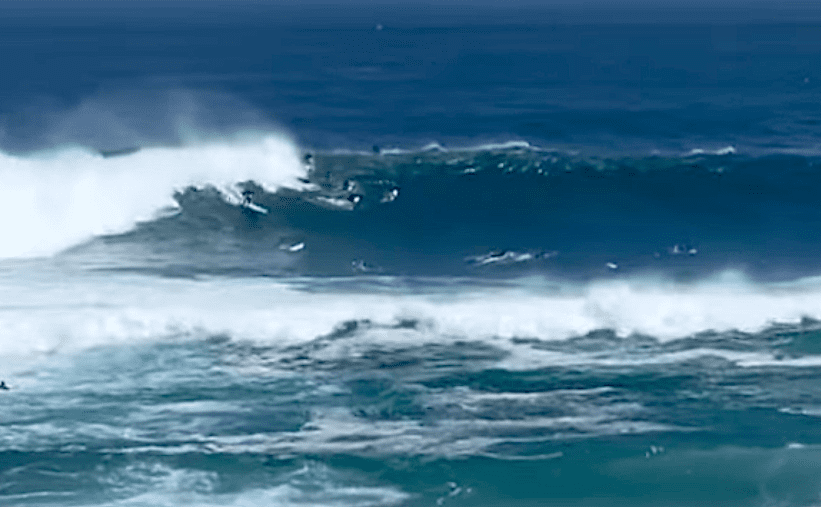Watch: Aussie Legend Surfs Finless Board on Huge Wave
Finless surfboards are old school, ancient in fact.
The alaia – a thin plank of koa wood with a rounded nose, no rocker, and no fins – was one model in the small quiver of Hawaiian surfers pre-20th century.
And yet today, the finless movement has made a somewhat of a comeback. Nothing huge, but some surfers have been sliding around on wooden planks, while others simply take a soft-top and rip the fins out. Like, for example, this legend below.
The legend in question is Cam Scott, a graphic designer, silk screener, and skilled finless surfboard slider. And the wave comes from a wild, utterly massive day at north Bondi Beach. Although quite mushy, the wave is certifiably XL…medium.
Scott scraps into the wave on the soft-top, bellyboards the drop, hits a section and gets launched in the air, then makes it to his feet, slides around, then kicks out before the shorebreak.
Captioning the clip, Scott wrote:
“Finally managed to link a few from the buckler . . . No close out pit on this one but claiming the 8ft long boog straight air 😂 Much love to @holdog for the iPhone vij / ridiculous screen grab and @marfellamario for letting me party 👌🙏”
As one commenter, the filmer of the clip, commented, it was quite the “full send on the shred sled!”
Not quite the type of waves the ancient Hawaiians were riding back in the day at Waikiki on their alaia boards. Not even close. Speaking of which, here’s a little history from Matt Warshaw’s Encyclopedia of Surfing:
“The original alaia was generally made of koa wood (sometimes breadfruit or wiliwili), and was the most suitable type of board for riding the steep, fast-breaking waves common to the Islands. Of the 13 premodern boards housed in Honolulu's Bishop Museum, 10 are alaias, ranging from seven to 12 feet in length, with an average width of 18 inches, and an average thickness of one inch.
“It's believed that most alaia-riding surfers used the lala technique of sliding at an angle along the wave face ahead of the white water. By comparison, the longer, thicker, heavier olo boards—thought to have been reserved for use by royalty only—were likely used to ride straight to shore on waves that were either unbroken or barely cresting.”
The alaia lives on. Sorta…
***
Don't miss another headline from SURFER! Subscribe to our newsletter, follow us on Instagram, and stay connected with the latest happenings in the world of surfing. We're always on the lookout for amusing, interesting and engaging surf-related videos to feature on our channels.
Whether you're a professional surfer or just an amateur, we want to see your best footage and help you share it with the world. Submit your video for a chance to be featured on SURFER and our social channels. Be sure to subscribe to our YouTube channel to watch high-quality surf videos.


